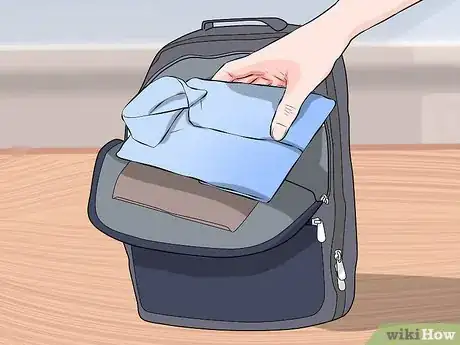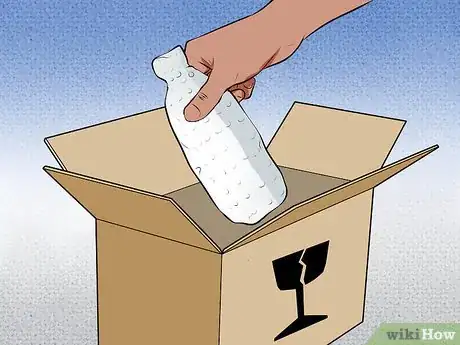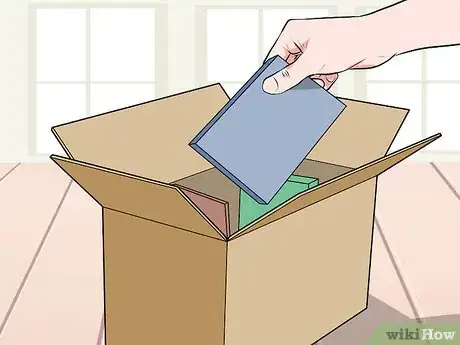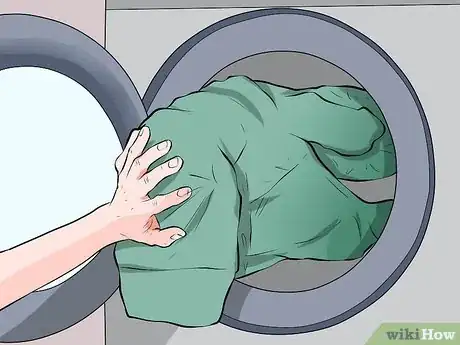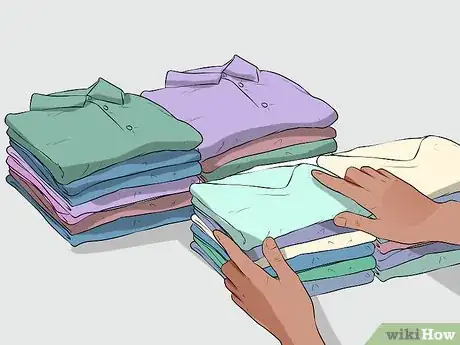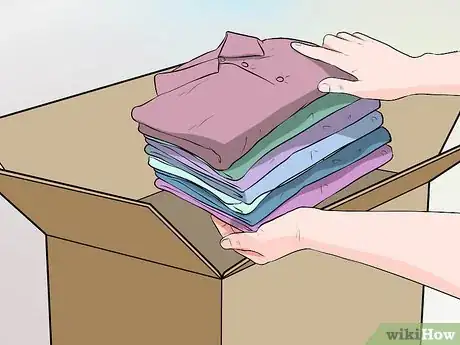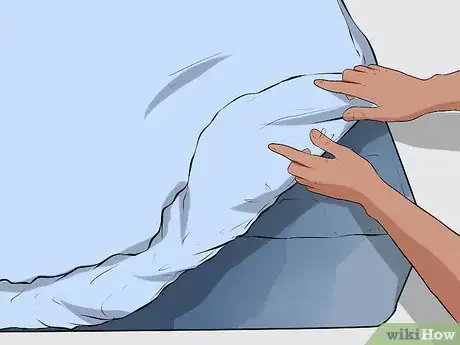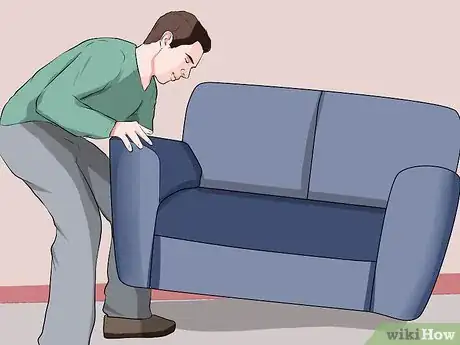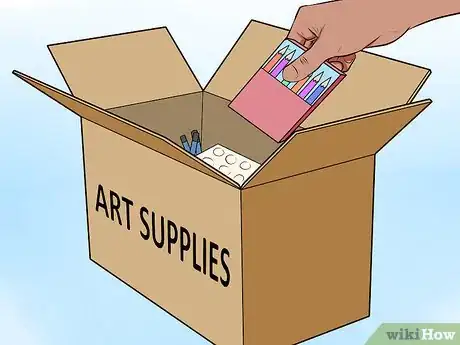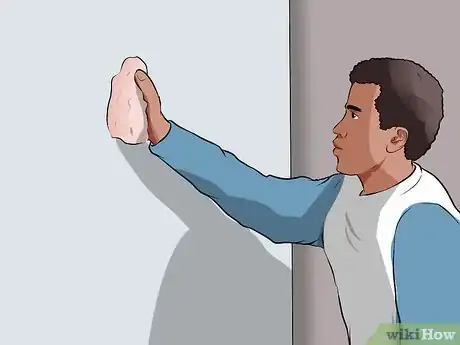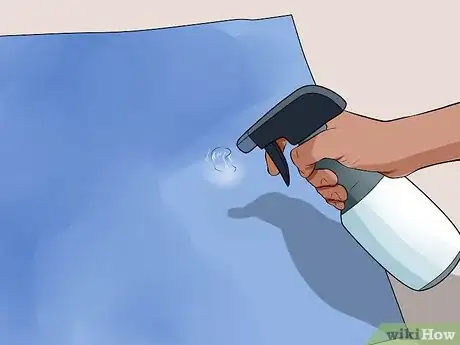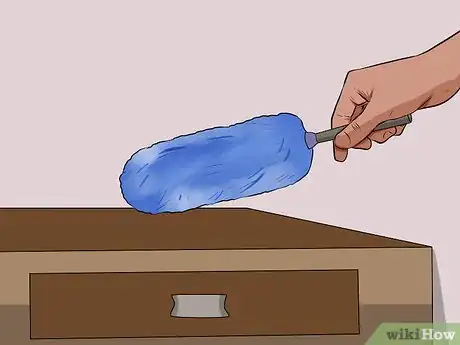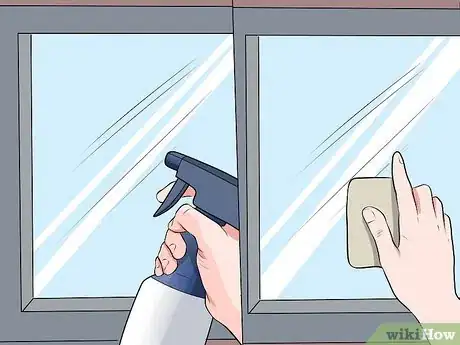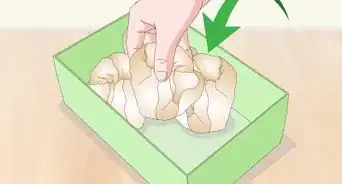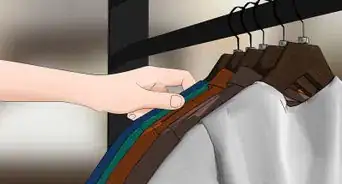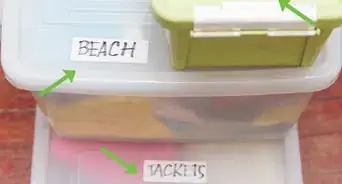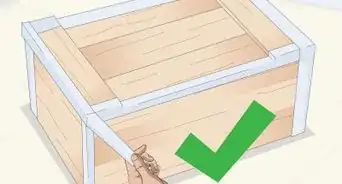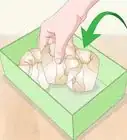This article was co-authored by Marty Stevens-Heebner, SMM-C, CPO®. Marty Stevens-Heebner is a Certified Professional Organizer (CPO) and Founder of Clear Home Solutions, a home organizing and senior moving management company based in southern California. Marty is the first Certified Senior Move Manager (SMM-C) in the United States and is a Certified Aging in Place Specialist (CAPS) through the National Association of Home Builders. She is the President-Elect and is on the board of directors of the National Association for Senior Move Managers, a member of the National Association of Professional Organizers, and has been acknowledged as a Hoarding Specialist and ADHD Specialist through the Institute for Challenging Disorganization.
There are 11 references cited in this article, which can be found at the bottom of the page.
This article has been viewed 121,252 times.
Whether you are moving out of a studio apartment, a dorm room, or even a large house, packing up your bedroom is often the toughest part about a move. Since bedrooms are often the most crowded rooms of the house, it helps to be focused and organized when you pack. By packing categorically, you will not only make the process of packing easier, but it will also be much simpler to unpack and find everything you need in your new place![1]
Steps
Packing Small and fragile Items
-
1Gather supplies. Before you start packing, make sure you have all the supplies you need. Depending on the amount of things in your room, buy at least 10 boxes ranging from large to small. Also get a roll of bubble wrap, masking tape, a black marker, and a trash bag or two.[2]
- Also consider getting one or two wardrobe boxes for packing your nicer clothes. If you are transporting posters, buy cylindrical poster containers to protect them from damage. Keep tools like screwdrivers and cleaning supplies handy as well.
- Make sure you are wearing comfortable clothes that you can move around in, as well as sneakers or other flat bottomed, closed-toed shoes.
- Even though it may seem more efficient, don’t only buy large boxes. Large boxes can get extremely heavy when packed, which will make carrying them a pain.
-
2Throw out unwanted items. You don’t want pack things that you’ll eventually just throw out when unpacking. Before you start packing, look around your room for any trash, papers or debris that you don’t need. Then, go through your possessions, especially your clothes, and see if there are any items that you no longer use.
- You can throw these items out or donate them if they are things like clothing or useable electronics.
Advertisement -
3Pack a suitcase of essentials. Before packing everything away, separate out the items you may need during the move. This may include a few outfits and toiletries like deodorant that you may keep in your bedroom. Also pack any electronics that you’ll need during the days of your move.[3]
- Pack all your essentials in a backpack or small suitcase that is easy to carry around.
-
4Pack fragile items. It’s a good idea to get fragile items wrapped up and packed away before you tackle the rest of your room. Take any fragile items like lamps or glass ornaments and wrap them liberally in bubble-wrap. Tape the bubble-wrap so that the item stays secure inside. Pack a small box, or several small boxes, with fragile items.[4]
- Make sure that each box of fragile items is full so that the items don’t slide around. If there’s a lot of space left in the box, stuff it with tissue paper or bubble-wrap. Add some extra cushion to the bottom of each box to ensure your items are safe from being broken in the move.[5]
- After you are done packing the fragile items, tape up the box and mark it “Fragile”. Place it outside your bedroom on a counter or tabletop and make sure not to put any other boxes on top of it.
-
5Pack small items. Fill small boxes with small, non-fragile items like papers, books, knick-knacks and whatever you may have on the top of your bedside table or on your bookshelf. If you are worried that the items might rattle around or get damaged during the move, wrap them in clothes to cushion them.[6]
- Pack books spine-down in the box.
- Label each box you pack with labels like “Bedroom Books”. Use a dark marker and write on at least two sides of the box.
-
6Roll up rugs and posters. You will need to roll up items like rugs and posters to transport them. If you have a rug in your room, roll it and tie it using a length of rope. Take posters down from the wall and remove any tacks or tape. Roll them up, slide a rubber band to secure the roll, and then put them into a cylindrical poster tube.
- The poster tube protects the poster so that it doesn’t tear or get crushed in the moving process.
Packing Your Clothing and Furniture
-
1Wash dirty clothes. You’ll have enough to worry about when you move into your new house or apartment without worrying about finding clean clothes. As you are washing your dirty clothes, you can begin to separate and organize your clean ones.
-
2Organize your clothes. Packing your clothes is often the most time-consuming aspect of packing up a bedroom. Instead of throwing everything into boxes, first organize your clothes by season. Put all your spring and summer clothes in one pile, and your winter and fall clothes in another. Make separate piles for underwear and socks, as well as for shoes.[7]
-
3Pack high-quality clothing in a wardrobe box. If you own any clothing items like a tuxedo or a very delicate dress, keep these items on their hangers. Instead of packing them in boxes, hang them in a wardrobe box. If possible, place the wardrobe box outside your room to minimize clutter.[8]
- Wardrobe boxes are tall boxes that have a hanging rail inside that helps you to hang your clothes. Wardrobe boxes take up a lot of space, so if space is an issue you should only use them for your more fancy clothes.
- If you have curtains in your room, fold them lengthwise and hang them from a padded hanger. Then place the hanger in the wardrobe box to prevent the curtains from creasing.[9]
- You can also use wardrobe bags if you are worried about space. Wardrobe bags protect your clothes but they don't stand upright. The should be packed on top of your boxes so that your clothes don't get crushed or damaged.
-
4Fold your clothes and place in boxes. Not only will folding your clothes make them less wrinkled when you take them out of the box, it will also help you pack more economically since folded clothes take up less space. After folding, place each type of clothing in its own box.[10]
- Label the boxes according to what is inside, with labels like “Summer shirts”, “Shoes” or “Skirts and shorts”. Seal the boxes with packing tape.
-
5Take the sheets and blankets off your bed. Fold up your sheets and blankets and put them in a large box along with your pillows. If you wish, put your mattress in a mattress bag to prevent it from getting dirty. Take the mattress out of the room and lean it against a wall to give yourself more space.[11]
-
6Disassemble furniture. You may have furniture items in your room like bookshelves or lamps that need to be disassembled before they can be moved. Use a screwdriver to remove nails or screws that keep the item together. If you are unsure of how to disassemble a certain piece of furniture, try to find the manual the item came with, or look online for the manual of the specific model you have.[12]
- If you are using a moving service, they can help you to disassemble the bed frame and take the mattress and frame out of your room.
- To disassemble your bed frame on your own, start by removing the bed slats, and then unscrew the screws in the frame to break the bed frame into several pieces.
- Place any nuts, bolts or other small parts of the bed frame in a plastic bag.
-
7Take your furniture out of the room. Clearing out the furniture will allow you to clean your room thoroughly. If you are renting a moving truck, have the movers help you move the furniture. Otherwise you may have to enlist the help of friends to help you move the furniture out of the bedroom.
- Make sure not to scratch furniture if you’re moving it, especially furniture made of wood which is particularly scratchable.
- If you are worried about furniture getting scratched, tape bubble-wrap onto the edges of each item.
-
8Pack up any remaining items. There probably will still be a few odds and ends lying around your room. Pack them up in a box, making sure to wrap any items in bubble-wrap if necessary. Label this box “Miscellaneous”, or a label that describes what most of the objects are, such as “Art Supplies.” By this point, your room should be completely bare and ready to clean!
Cleaning Your Room
-
1Clean your walls. After you have moved out all your belongings, you may notice that your walls are scuffed or dirty. First, remove all tacks, tape, or nails that you may have on your walls. Then use a non-abrasive all-purpose cleaner to scrub the walls.[13]
- Dip the sponge into water mixed with a tablespoon of solution and wring out the sponge.
- Test a patch of the wall by scrubbing with the sponge. If the sponge doesn’t leave a watermark or a dark mark when it dries, use the sponge to clean any dirty spots or scuffs on your wall.
- If you have small holes in your wall, fill them with putty. Then use a putty knife or even your finger to smooth the putty and make it level with the wall.
-
2Vacuum the floor. Use a high-powered vacuum to give your floor a through vacuum. Make sure to get every nook and cranny of the room. If the room is carpeted, go over the whole room a couple of times. Carpeting captures a lot of dust and dirt, so going over it just once may not do the trick.[14]
-
3Use carpet stain remover. If you have carpeting in your room and notice that there is a stain, use a carpet stain remover to get rid of the stain. Follow the instructions on the bottle to effectively remove the stain. If the carpet is white, make sure not to use a colored product that could stain the rug further.[15]
-
4Dust thoroughly. Now that the room is empty, you may see dust clinging to surfaces formerly covered by furniture or posters. Use a feather duster to brush away light dust. You can also use a damp paper towel to get at thick dust or dust bunnies. Also make sure to dust window ledges and around the threshold of the door.[16]
-
5Clean the windows. Spray a newspaper with window cleaner and rub over the entire surface of the windows in your room. If your room came with an in-wall mirror, use the same method to clean the mirror and leave it sparkling.
Expert Q&A
-
QuestionHow should I pack my clothes when moving?
 Marty Stevens-Heebner, SMM-C, CPO®Marty Stevens-Heebner is a Certified Professional Organizer (CPO) and Founder of Clear Home Solutions, a home organizing and senior moving management company based in southern California. Marty is the first Certified Senior Move Manager (SMM-C) in the United States and is a Certified Aging in Place Specialist (CAPS) through the National Association of Home Builders. She is the President-Elect and is on the board of directors of the National Association for Senior Move Managers, a member of the National Association of Professional Organizers, and has been acknowledged as a Hoarding Specialist and ADHD Specialist through the Institute for Challenging Disorganization.
Marty Stevens-Heebner, SMM-C, CPO®Marty Stevens-Heebner is a Certified Professional Organizer (CPO) and Founder of Clear Home Solutions, a home organizing and senior moving management company based in southern California. Marty is the first Certified Senior Move Manager (SMM-C) in the United States and is a Certified Aging in Place Specialist (CAPS) through the National Association of Home Builders. She is the President-Elect and is on the board of directors of the National Association for Senior Move Managers, a member of the National Association of Professional Organizers, and has been acknowledged as a Hoarding Specialist and ADHD Specialist through the Institute for Challenging Disorganization.
Certified Professional Organizer & Senior Move Manager Certified Professional Organizer & Senior Move ManagerExpert AnswerWardrobe boxes are great because they have a bar at the top so that you can just take the things that are hanging in your closet and hang them in the wardrobe box. It's really efficient. Plus you can put your shoes, handbags, linens, and that sort of thing at the bottom of the box.
Certified Professional Organizer & Senior Move ManagerExpert AnswerWardrobe boxes are great because they have a bar at the top so that you can just take the things that are hanging in your closet and hang them in the wardrobe box. It's really efficient. Plus you can put your shoes, handbags, linens, and that sort of thing at the bottom of the box. -
QuestionHow do I pack away a completely furnished room in a day?
 Community AnswerWake up early and stay on task. Make a list of everything you must do and check the items off one-by-one.
Community AnswerWake up early and stay on task. Make a list of everything you must do and check the items off one-by-one. -
QuestionHow do kids pack up?
 Community AnswerMake packing fun! Reward yourself for every box you pack with a small treat like a candy. This will motivate you to keep going. Just be sure to ask an adult for help when packing fragile things or pieces of furniture.
Community AnswerMake packing fun! Reward yourself for every box you pack with a small treat like a candy. This will motivate you to keep going. Just be sure to ask an adult for help when packing fragile things or pieces of furniture.
Warnings
- Open a window when using strong cleaning products, as some cleaning products can be toxic.⧼thumbs_response⧽
- Do not carry furniture when wearing sandals or other open-toed shoes.⧼thumbs_response⧽
- Never lift anything that is too heavy for you. This could cause serious injury as well as damage to the item.⧼thumbs_response⧽
References
- ↑ Marty Stevens-Heebner, SMM-C, CPO®. Certified Professional Organizer & Senior Move Manager. Expert Interview. 14 January 2020.
- ↑ https://unclutterer.com/2011/02/28/moving-how-to-pack-your-home/
- ↑ https://unclutterer.com/2011/02/28/moving-how-to-pack-your-home/
- ↑ https://moving.bedbathandbeyond.com/how-to-pack-fragile-items-a-professional-movers-secrets/
- ↑ Marty Stevens-Heebner, SMM-C, CPO®. Certified Professional Organizer & Senior Move Manager. Expert Interview. 14 January 2020.
- ↑ http://www.moving.com/moving-boxes/packing-properly.asp
- ↑ https://unclutterer.com/2011/02/28/moving-how-to-pack-your-home/
- ↑ http://guides.uship.com/moving/how-to-pack-clothes-for-moving/
- ↑ https://www.allied.com/moving-tips/packing-tips-bedroom-bathroom.aspx
- ↑ http://www.mymovingreviews.com/move/how-to-pack-a-bedroom
- ↑ http://www.transitsystems.com/moving-tips-and-tricks/2015/05/08/how-to-safely-pack-your-furniture/
- ↑ http://www.transitsystems.com/moving-tips-and-tricks/2015/05/08/how-to-safely-pack-your-furniture/
- ↑ http://www.bhg.com/homekeeping/house-cleaning/surface/how-to-clean-painted-walls/#page=0
- ↑ https://www.apartmenttherapy.com/move-out-cleaning-checklist-to-get-your-deposit-back-175617
- ↑ https://www.apartmenttherapy.com/move-out-cleaning-checklist-to-get-your-deposit-back-175617
- ↑ https://www.apartmenttherapy.com/move-out-cleaning-checklist-to-get-your-deposit-back-175617
- ↑ Marty Stevens-Heebner, SMM-C, CPO®. Certified Professional Organizer & Senior Move Manager. Expert Interview. 14 January 2020.
- ↑ Marty Stevens-Heebner, SMM-C, CPO®. Certified Professional Organizer & Senior Move Manager. Expert Interview. 14 January 2020.
About This Article
If you’re packing your bedroom for a big move, start by packing fragile items, like perfume bottles and lampshades, in small boxes to keep them intact. Then, instead of folding and packing your clothes into boxes, keep them on their hangers and tie clean garbage bags around them. Secure the garbage bags around the hanger hooks, and your clothes are ready to go! Finally, if you can, disassemble your furniture so it’s easier to move. Even if you can’t disassemble your furniture, see if you can pack smaller pieces inside larger ones, so you have fewer things to carry! For tips on how to clean your room after you’ve packed, including how to deal with pesky stains, read on!



